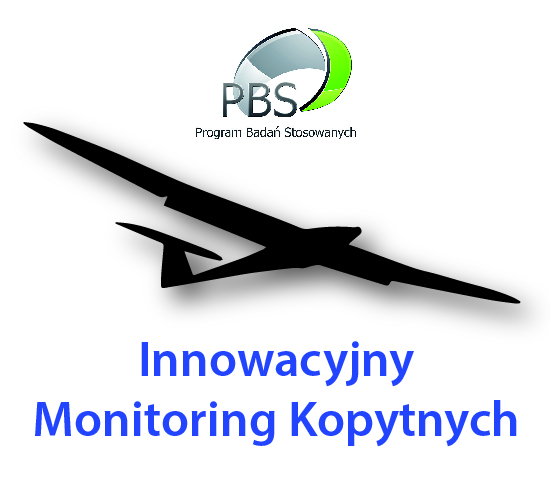Contact:
dr hab. Magdalena Witek
Head of the Group of Social and Myrmecophlious Insects
Contact:
Ten adres pocztowy jest chroniony przed spamowaniem. Aby go zobaczyć, konieczne jest włączenie w przeglądarce obsługi JavaScript.
Ten adres pocztowy jest chroniony przed spamowaniem. Aby go zobaczyć, konieczne jest włączenie w przeglądarce obsługi JavaScript.

Main Research Interest
- social parasitism in ants
- myrmecophily
- interactions between ants and fungi
- ant biodiversity
- division of labour in social insects
- development of personality in ants
Projects
Susceptibility of ant colonies for social parasitism and the impact of social parasites on host colony fitness. Fuga, Polish National Science Centre, 2012-2015, Principal Investigator
Personality in ants and factors influencing its development. Opus, Polish National Science Centre, 2016-2019, Principal Investigator
Adaptations and ongoing co-evolution: the case of source and reintroduced populations of obligatory myrmecophilous butterfly Maculinea teleius. Opus, Polish National Science Centre, 2019-2024, Principal Investigator
Bacteria – ant – plant interaction: the effect of ants as bacteria dispersal vectors and indirect drivers of plant health, Preldium, Polish National Science Centre, 2021-2024, (Daniel Sanchez Garcia – PI), Supervisor
Alien rule: Unveiling the mechanisms used by invasive ants to adapt to current and future environmental conditions, Polonez Bis 1, Polish National Science Centre , 2022-2024, (Iago Sanmatrin Villar – PI), Mentor
Who is pulling the strings? The importance of nutrition in a host-parasite system, Polonez Bis 2, Polish National Science Centre , 2023-2025, (Eniko Csata – PI), Mentor
Mobility
- Italy, University of Turin, Department of Human and Animal Biology, post-doc position, 02.2008-09.2012
- Romania, Hungarian Department of Biology and Ecology, Cluj-Napoca; Babeq-Bolyai University, International project in the framework of cooperation between Polish and Romanian Academies of Sciences, (2 weeks in 2013 and 2 weeks in 2014, 2 weeks in 2015, one week in 2019)
- Bulgaria, Institute of Biodiversity and Ecosystem Research, BAS, Sofia, Bulgaria (1 week in 2014), Sofia University (1 week in 2023)
- Germany, Department of Zoology and Evolutionary Biology, Regensburg University (3 weeks in 2016 and 1 week in 2022).
- Netherlands, Dutch Butterfly Conservation, Wageningen, (1 week in 2018, 1 week in 2019, 1 week in 2020).
Publications
1.Orbán-Bakk K., Witek M., Dubiec A., Heinze J., Markó B., Csata E. 2024. Infection with a non-lethal fungal parasite is associated with increased immune investment in the ant Myrmica scabrinodis. Journal of Invertebrate Pathology, 202: 108027
- Trigos Peral G., Maak I., Schmid S., Chodzik P., Czaczkes TJ., Witek M., Casacci LP., Sanchez Garcia D., Lorincz A., Kochanowski M., Heinze J. 2024.Urban abiotic stressors drive changes in the foraging activity and colony growth of the black garden ant Lasius niger. 2024. Science of The Total Environment, 915: 170157.
- Witek M., La Morgia V., Casacci L. P., Barbero F. 2023. The Pattern of Social Parasitism in Maculinea teleius Butterfly Is Driven by the Size and Spatial Distribution of the Host Ant Nests. Insects 14: 180
- Trigos-Peral G., Maák I.E., Ślipiński P., Witek M. 2023. Behavioral and morphological traits influencing variation in task performance of Camponotus vagus ants. Insectes Sociaux 70: 451–461.
- Śliwińska E.B., Martyka R., Woyciechowski M., Blinov A., Nowicki P., Stettmer C., Kajzer-Bonk J., Witek M., Brau M., Gros P., Mühlenberg M., Slowik J., Tyryanowski P., Settele J.. 2021. Comparison of genetic patterns between European and Asian populations of an endangered butterfly species. Insect Conservation and Diversity 14: 67-80.
- Casacci LP., Barbero F., Ślipiński P., Witek M. 2021. The Inquiline Ant Myrmica karavajevi Uses Both Chemical and Vibroacoustic Deception Mechanisms to Integrate into Its Host Colonies. Biology 10: 654.
- Ślipiński P., Trigos-Peral G., Maák I., Wojciechowska I., Witek M. 2021. The influence of age and development temperature on the temperature-related foraging risk of Formica cinerea ants. Behavioral Ecology and Sociobiology 75: 107.
- Maziarz M., Broughton R.K., Casacci L.P., Hebda G., Maák I., Trigos-Peral G., Witek M. 2021. Interspecific attraction between ground-nesting songbirds and ants: the role of nest-site selection. Frontiers in Zoology 18: 43.
- Maák I., Trigos-Peral G., Ślipiński P., Grześ I.M., Horváth G., Witek M. 2021. Habitat features and colony characteristics influencing ant personality and its fitness consequences. Behavioral Ecology 32 (1): 124–137.
- Trigos-Peral G., Rutkowski T., Witek M., Ślipiński P., Babik H., Czechowski W. 2020. Three categories of urban green areas and the effect of their different management on the communities of ants, spiders and harvestmen. Urban ecosystems 23: 803 – 818
- Maziarz M., Broughton R. K., Casacci L. P., Dubiec A., Maák I., Witek M. 2020. Thermal ecosystem engineering by songbirds promotes a symbiotic relationship with ants. Scientific Reports 10: 20330.
- Tartally A., Thomas J., Anton C., Balletto E., Barbero F., Bonelli S., Bräu M., Casacci L. P., Csősz S., Czekes Z., Dolek M., Dziekańska I., Elmes G., Fürst M. A., Glinka U., Hochberg M., Höttinger H., Hula V., Maes D., Munguira M. L., Musche M., Nielsen P. S., Nowicki P., Oliveira P. S., Peregovits L., Ritter S., Schlick-Steiner B. C., Settele J., Sielezniew M., Simcox D.J., Stankiewicz-Fiedurek A. M., Steiner F. M., Švitra G., Ugelvig L.V., Van Dyck H., Varga Z., Witek M., Woyciechowski M., Wynhoff I., Nash D. R. 2019. Patterns of host use by brood-parasitic Maculinea butterflies across Europe. Philosophical Transactions of the Royal Society B: 20180202.
- Maák I., Camera J., Casacci L. P., Barbero F., Trigos Peral G., Ślipiński P., Bonelli S., Zaccagno M., Witek M. 2019)\. The influence of colony traits on the collective behaviour of Myrmica scabrinodis ants. Insect Conservation and Diversity 12: 481–491.
- Grześ IM., Ślipiński P., Babik H., Moroń D., Walter B., Trigos Peral G., Maak I., Witek M. 2018. Colony size and brood investment of Myrmica rubra ant colonies in habitat invaded by goldenrods. Insectes Sociaux, doi: 10.1007/s00040-018-0612-0.
- Trigos Peral G., Casacci LP., Ślipiński P., Grześ IM., Moroń D., Babik H., Witek M. 2018. Ant communities and Solidago plant invasion: Environmental properties and food sources. Entomological Science, doi: 10.1111/ens.12304.
- Csata E., Timus N., Witek M., Casacci LP., Lucas C., Bagneres AG., Sztencel-Jablonka A., Barbero F., Bonelli S., Rakosy L., Marko B. (2017) Lock-picks: fungal infection facilitates the intrusion of strangers into ant colonies. Scientific Reports, 7, article nb. 46323.
- Witek M., Ślipiński P., Trigos Peral G., Csata E. 2016. Consequences of the arms race between Maculinea teleius social parasite and Myrmica host ants for myrmecophilous butterfly conservation. Journal of Insect Conservation, 20: 887–893.
- Witek M., Ślipiński P., Naumiec K., Krupski A., Babik H., Walter B., Symonowicz B., Dubiec A. 2016. Performance of Myrmica ant colonies is correlated with presence of social parasites. Ecological Entomology, 41: 284–291.
- Sielezniew M., Patricelli D., Rutkowski R., Witek M., Bonelli S., Buś M.M. 2015 Population genetics of the endangered obligatorily myrmecophilous butterfly Phengaris (= Maculinea) arion in two areas of its European range. Insect Conservation and Diversity, 8: 505-516.
- Witek M., Barbero F., Markó B. 2014. Myrmica ants host highly diverse parasitic communities: from social parasites to microbes. Insectes Sociaux, 61: 307–323.
- Witek M., Casacci L. P., Barbero F., Patricelli D., Sala M., Bossi S., Maffei M., Woyciechowski M., Baletto E., Bonelli S. 2013. Interspecific relationships in co-occurring populations of social parasites and their host ants. Biological Journal of Linnean Society, 109: 699–709.
- Lenda M., Witek M., Skórka P., Moroń D., Woyciechowski M. 2013. Invasive alien plants affect grassland ant communities, colony size and foraging behavior. Biological Invasions, 15: 2403-2414.
- Kajzer-Bonk J., Nowicki P., Bonk M., Skórka P., Witek M., Woyciechowski M. 2013. Local populations of endangered Maculinea (Phengaris) butterflies are flood resistant. Journal of Insect Conservation, 17: 1105-1112.
- Patricelli D., Sielezniew M., Ponikwicka-Tyszko D., Ratkiewicz M., Bonelli S., Barbero F., Witek M., Bus M., Rutkowski R., Balletto E. (2013) Contrasting genetic structure of rear edge and continuous range populations of a parasitic butterfly infected by Wolbachia. BMC Evolutionary Biology, 13, article number 14.
- Skórka P., Nowicki P., Kudłek J., Pępkowska A., Śliwińska E.B., Witek M., Settele J., Woyciechowski M. 2013. Movements and flight morphology in the endangered Large Blue butterflies. Central European Journal of Biology, 8: 662-669.
- Skórka P., Nowicki P., Lenda M., Witek M., Śliwińska E.B., Settele J., Woyciechowski M. 2013. Different flight behaviour of the endangered scarce large blue butterfly Phengaris teleius (Lepidoptera: Lycaenidae) within and outside its habitat patches. Landscape Ecology, 28: 533-546.
- Bonelli S., Vrabec V., Witek M., Barbero F., Patricelli D., Nowicki P. 2013. Selection on dispersal in isolated butterfly metapopulations. Population Ecology, 55: 469-478.
- Witek M., Canterino S., Balletto E., Bonelli S. 2012. Life cycle and growth pattern of the endangered myrmecophilous Microdon myrmicae (Diptera: Syrphidae). European Journal of Entomology, 109: 457–461.
- de Assis RA., Bonelli S., Witek M., Barbero F., Casacci LP., Balletto E., Venturino E., Ferreira WC. 2012. A model for the evolution of parasite-host interactions based on the Maculinea-Myrmica system: Numerical simulations and multiple host behavior. Nonlinear Analysis-Real World Applications, 13: 1507-1524.
- 30. Witek M., Particelli D., Casacci LP., Barbero F., Balletto E., Bonelli S. 2011. Notes on the biology and host ant specificity of the myrmecohhilous syrphis fly Microdon major (Diptera: Syrphidae), a social parasite of Formica ants (Hymenoptera: Formicidae). Sociobiology, 57: 261-269.
- Bonelli S., Witek M., Canterino S., Sielezniew M., Stankiewicz-Fiedurek A., Tartally A., Balletto E., Schӧnrogge K. 2011. Distribution, host specificity and the potential for cryptic speciation in hoverfly Microdon myrmicae (Diptera: Syrphidae), a social parasite of Myrmica ants. Ecological Entomology, 36: 135-143.
- Particelli D., Barbero F., La Morgia V., Casacci L.P., Witek M., Balletto E., Bonelli S. (2011) To lay or not to lay: oviposition of Maculinea arion in relation to Myrmica ant presence and host plant phenology. Animal Behaviour, 82: 791-799.
- Casacci LP., Witek M., Barbero , Patricelli D., Solazzo G., Balletto E., Bonelli S. (2011) Habitat preferences of Maculinea arion and its Myrmica host ants: implications for habitat management in Italian Alps. Journal of Insect Conservation, 15: 103-110.
- Witek M., Skórka P., Śliwinska BE., Nowicki P., Moroń D., Settele J., Woyciechowski M. (2011) Development of parasitc Maculinea teleius (Lepidoptera, Lycaenidae) in laboratory nests of four Myrmica ant host species. Insectes Sociaux, 58: 403-411.
- Patricelli D., Witek M., Barbero F., Casacci LP., Bonelli S., Balletto E. (2010) Evidence of high larval host ant specificity in the first post adoption phase for the myrmecophilous butterfly Phengaris (Maculinea) nausithous (Lepidoptera: Lycaenidae). Sociobiology, 55: 861-870.
- Sielezniew M., Patricelli D., Dziekańska I., Barbero F., Casacci L.P., Witek M., Balletto E., Bonelli S. (2010) The first record of M. lonae (Hymenoptera: Formicidae) as a host of socially parasitic Blue butterfly Phengaris (Maculinea) arion. Sociobiology, 56: 465-475.
- Witek M., Nowicki P., Śliwinska BE., Skórka P., Settele J., Schӧnrogge K., Woyciechowski M. (2010) Local host ant specificity of Phengaris (Maculinea) teleius butterfly, an obligatory social parasite of Myrmica ants. Ecological Entomology, 35: 557-564.
- Witek M., Śliwińska EB., Skórka P., Nowicki P., Wantuch M., Vrabec V., Settele J., Woyciechowski M. (2008) Host ant specificity of Large Blue butterflies Phengaris (Maculinea) (Lepidoptera: Lycaenidae) inhabiting humid grasslands of East-central Europe. European Journal of Entomology, 105: 871-877.
- Śliwińska EB., Witek M., Skórka P., Osikowski A., Woyciechowski M. (2008). The frequency of multiple paternity in Myrmica scabrinodis from southern Poland. Entomological Science, 11: 127-129.
- Moron D., Witek M., Woyciechowski M. (2008) Division of labour among workers with different life expectancy in ant Myrmica scabrinodis. Animal Behaviour, 75: 345-350.
- Nowicki P., Pępkowska A., Kudłek J., Skórka P., Witek M., Settele J., Woyciechowski M. (2007) From metapopulation theory to conservation recommendations: lessons from spatial occurrence and abundance patterns of Maculinea butterflies. Biological Conservation, 140: 119-129.
- Śliwinska EB., Nowicki P., Nash DR., Witek M., Settele J., Woyciechowski M. (2006) Morphology of caterpillars and pupae of European Maculinea species (Lepidoptera: Lycaenidae) with an identification table. Entomologica Fennica, 17: 351-358.
- Skórka P., Witek M., Woyciechowski M. (2006) A simple and nondestructive method for estimation of worker population size in Myrmica ant nests. Insectes Sociaux, 53: 97-100.
- Witek M., Śliwinska E., Skórka P., Nowicki P., Settele J., Woyciechowski M (2006) Polymorphic growth in larvae of Maculinea butterflies, as an example of biennialism in myrmecophilous insects. Oecologia, 148: 729-733.
- Nowicki P., Witek M., Skórka P., Woyciechowski M. (2005) Oviposition patterns in the myrmecophilous butterfly Maculinea alcon in relation to characteristic of foodplants and presence of ant hosts. Polish Journal of Ecology, 53: 409-417.
- Nowicki P., Witek M., Skórka P., Woyciechowski M., Settele J. (2005) Population ecology of endangered butterflies Maculinea teleius and M. nausithous, and its conservation implications. Population Ecology, 47: 193-202.
- Dubiec A., Witek M., Cichoń M. (2005) Seasonal decline in leukocyte concentration and reproductive output in female Great Tits. The Auk, 122: 829-834.









